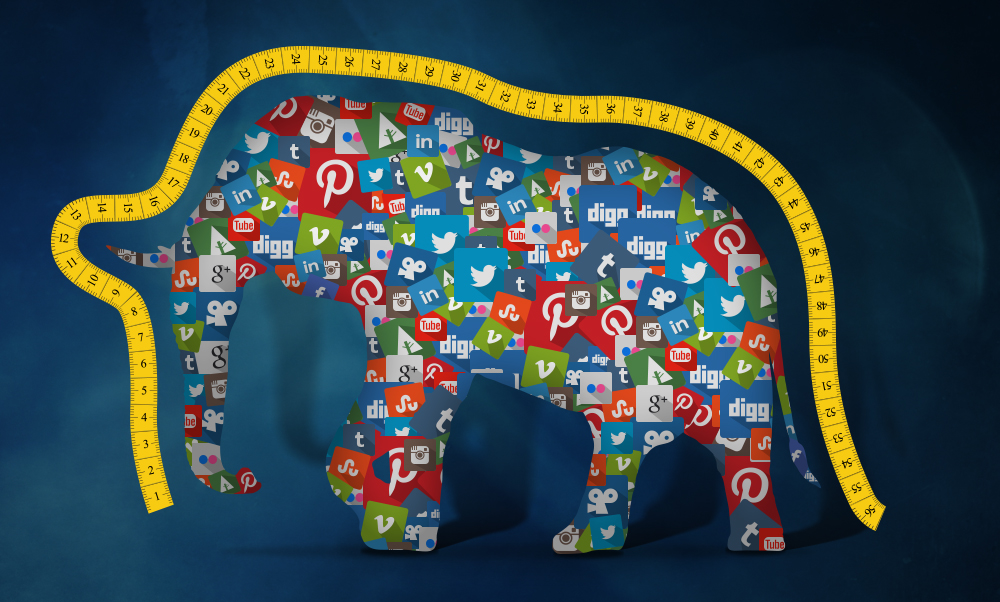Why social media marketing? It’s a low-cost way to reach your target audience and expand brand awareness with the potential to greatly increase your ROI. Plus, 7 out of 10 consumers are more likely to use a local business if it has information available on a social media site (comScore Networks/TMP Directional Marketing).
What social media chemistry is right for your business? One mix might make your public relations strategy explode and another will develop into a cohesive formula that will give you the social ROI you’re looking for. Let’s examine the benefits offered by the major platforms and strategies behind inventing the perfect social marketing mix.
“7 out of 10 consumers are more likely to use a local business if it has information available on a social media site.”
The Ingredients = Major Social Media Networks
”Facebook, Google+, Twitter, Slideshow…Tumbling… and what’s that other one?”
If this is how you sound when it comes to all the social media accounts to choose from, don’t worry, you’re not alone. With more than a dozen social sites that are popular and composed of different elements, it’s normal to feel perplexed. For the sake of time, and your sanity, in this article we will only examine the “Big 4”: Facebook, Google+, LinkedIn, Twitter.
Facebook – Basically the cornerstone of social media marketing, Facebook is used by nearly all businesses to build their brand’s presence.
- Facebook is a convenient solution for answering customer service inquiries, share office and business culture (behind the scenes look), news and updates, and other methods of engagement.
- Be sure you make yourself available to answer questions as quickly as possible. How soon? According to Edison Research, 42 percent of consumers who voice a complaint via social media expect sixty minute response time.
- With Facebook, you are not limited on length of a post as opposed to Twitter with its unique 140 character limit.
Businesses that provide products or services marketed to the general public often find success with this platform. Some examples include, non-profit organizations, real estate agents, artists, beauty salons, freelancers, and small businesses.
Google+ – A constant stream of information, Google+ is an enormous pool of shareable content. This is a great place to post your blog articles, landing pages, press releases, news and other industry-related content. Enjoy.
- Google+ has a less personal feel – especially compared to Facebook.
- It has amazing tools for team collaboration and client interaction, such as Google hangouts. A free place to conduct face-to-face calls, hangouts also allows users to easily share their screen – making this tool the ultimate meeting destination.
- Google Drive – your digital work folder. Create word documents, spreadsheets, even drawings, and images stored and shared on the Google cloud.
- It’s integrated with YouTube. In fact, you have to have a Google account to create a Youtube channel.
- Posts from your timeline can actually be indexed by Google and show up in the search results.
Considering the positive aspects of this platform, it’s likely inevitable that you will have to open a Gmail account for certain tasks. However, the value you get by posting regularly and engaging on Google+ will vary business to business. Generally speaking, B2Bs do well on G+.
LinkedIn – This platform is an excellent resource for companies that wish to find employees or connect with other companies.
- More than 277 million companies and individuals are registered on LinkedIn.
- The B2B marketing opportunities on LinkedIn are vast, and leads generated by LinkedIn are more likely to convert than leads generated from other social media platforms.
- Only 47 percent of B2B marketers are actively using LinkedIn – leaving plenty of room for opportunity.
Businesses, as mentioned above, especially B2B businesses, along with other professionals, recruiters and job seekers are ideal for LinkedIn.
Twitter – I’m going to go so bold as to say that everyone needs to be on Twitter. From even the smallest businesses to multi-national corporations, your presence as a business is expected for this platform.
- Limited to only 140 characters per tweet, these posts deliver concise messages.
- This is the place to share company news, link to other content that’s relevant to your industry, and other industry happenings. Mindjumper reports that 34 percent of marketers have generated leads using Twitter.
The Strategy Behind Social Media Pick-ology
Whether you are adding platforms to your current social media mix or launching your social media presence, it’s important to select the right social platforms for your business type.
It’s all too easy and too common for businesses to get trapped into the misconception that their business needs to be well-established on all the major social networks. That strategy may work, but specializing on many can be incredibly time-consuming.
It’s smarter to heavily invest efforts in two social media platforms rather than spread out too far and perhaps haphazardly maintain many of them. Nothing looks worse for your business than a social media site that hasn’t had a new post in two or more years.
Put Your Customers Under a Microscope
Taking a closer look at the nature of your customers and your target audience provides the data you need to create a killer formula for your social marketing plan.
- Hypothesize – Hypothesize who your target market is based on what your product is, what it offers and who consumes it.
- Analyze – Conduct a thorough analysis on your web traffic. Google Anayltics is a good tool to do this. Go to your GA account and follow these steps to enable demographic tracking:
1. In your account settings, update your privacy policy and Analytics tracking code to Display Advertising.
2. Go to ”Audience’‘ > ”Demographics Overview” and simply click the ”enable” button to activate your demographic reports.
3. Go to Admin Interface, click ”Admin” >”Property Settings” and click the checkbox under the Interest and Demographics section to enable these reports.
- Research – Once you have narrowed down your target audience, do some research and apply some common sense to determine which social media platform they would like engage with.
Determine the Point of Your Experiment
- Determine business goals. Careful evaluation of business goals is a fundamental step when creating your social strategy. Aspects to consider include who will be in charge of social media posting, in what ways you plan on interacting with your audience, who you are targeting, which measures and metrics are most important to your business, and the type of content you plan on posting.
- Research the paid advertising opportunities. All the social media platforms that offer paid advertising vary with offerings and effectiveness. Paid ads create opportunities to grow your community, increase the ROI on social media, and engage your target audience. Many businesses have found success with Facebook Ads. According to Ipsos, 20% of Facebook users have purchased something because of ads or comments they found on the platform.
- Consider your capabilities. How much man power is going to be behind this effort. Don’t bite off more than you can chew by registering accounts on too many platforms that you won’t be able to keep up with. Your business reputation may actually suffer damage if you create accounts on social media and then cease to keep them updated. It makes your business look incomplete possibly even incompetent.
A Formula Unique to Your Business
Use this information when creating your unique social marketing mix. Whatever you decide, be sure you don’t overextend your resources. It’s best to choose one or two platforms and invest a decent amount of time and energy into those, rather than spreading yourself too thin between several sites. Whichever platforms you are working from, always keep your content fresh and original. According to Small Business Can, 52% of consumers stop following a business’ page because of boring and repetitive content. You’ve been warned.
If you need help with social media or want to learn more about picking the right platform for your business, contact us.





Leave A Comment